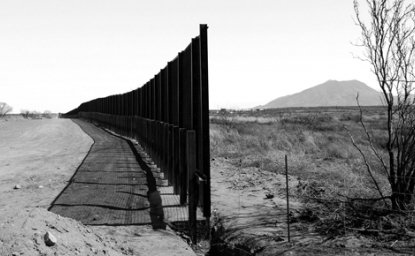Mexico’s Ciudad Juarez, once the country’s most violent city, has seen violence drop dramatically in the last three years. The Woodrow Wilson Center’s Christopher Wilson explores whether the current government can do the same with Nuevo Laredo, the current epicenter of violence along the border.
In early 2010, as violence in Ciudad Juarez skyrocketed, former Mexican president Felipe Calderon declared that the 15 young people who had been gunned down at a celebration following a youth league baseball game were themselves criminals, that in a certain sense they had it coming. He was wrong, and the parents of the victims made sure he would not forget it.
Their children were innocent victims of Juarez’s gang war, a case of mistaken identity, and though President Calderon may have initially visited Juarez in an effort to atone for the gaffe, in the end he created a major federal program, “Todos Somos Juarez” (We Are All Juarez), that brought together the business community, civil society and the various levels of government to take on the challenge of organized crime. In part as a result of the investments and efforts of all of these groups, by the beginning of 2013 the murder rate in Ciudad Juarez had fallen 90 percent from its high point at the end of 2010.
Yet even as crime has subsided on the western stretch of the border, the US State Department reports murders in Nuevo Laredo, Tamaulipas are up 92.5 percent from their 2012 level and that the state’s kidnapping rate is the highest in the nation. The police was disbanded in 2011, and thousands have fled into the United States, including large numbers of community and business leaders. At the heart of this violence are the Zetas, the local criminal powerbrokers of the region. And following the capture of the group’s leader, Miguel Angel Treviño Morales, alias “Z40,” on July 16, the situation may get worse as rivals seek to fill the power vacuum.
Still, Nuevo Laredo has hope. With a new president in Los Pinos, Zetas leader Treviño behind bars, and the election of a new party to the mayors office for the first time in 38 years, it might be possible for federal, state and local actors to design and implement an effort to reduce violence and restore the rule of law in the city. This article seeks not to design such a plan but to suggest that despite the challenges, if the right group of actors is brought together and sufficient resources are dedicated, Nuevo Laredo can become a key success in the new Mexican administration’s security policy. To view the rest of the article read the PDF





